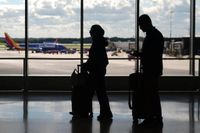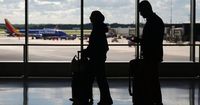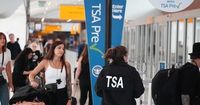In the early hours of October 6, 2025, a startling message crackled over the radio waves at Hollywood Burbank Airport, just outside Los Angeles: "The tower is closed due to staffing." For nearly six hours, the air traffic control tower—normally a bustling hub of voices guiding planes safely in and out—went dark. Pilots, left to their own devices, had to coordinate takeoffs and landings among themselves. The result? Average flight delays of two and a half hours, a visible symptom of the deeper crisis gripping America’s aviation system as the federal government shutdown entered its second week.
According to reporting from The Buffalo News and the Associated Press, this wasn’t an isolated hiccup. Since the shutdown began on October 1, the Federal Aviation Administration (FAA) has been sounding the alarm about staffing shortages in air traffic control towers and centers across the country. Major cities like Boston, Philadelphia, Atlanta, Houston, Nashville, Dallas, and Newark have all experienced disruptions. Travelers have found themselves stuck in terminals, watching departure boards flicker with delay after delay, as the nation’s aviation backbone strains under the weight of chronic understaffing and outdated technology.
For many, the shutdown’s effects have been immediate and personal. The union representing Transportation Security Administration (TSA) employees noted a sharp uptick in unscheduled absences among security screeners after they received what could be their last paychecks for a while. While these absences haven’t yet caused major disruptions, the union warned that longer lines at security checkpoints are looming if the shutdown drags on. “It’s like having a drought the year after you had a drought,” Greg Raiff, CEO of Elevate Aviation Group, told the Associated Press. The cracks in the system, he and others warn, are only going to get wider.
These issues aren’t new. The U.S. aviation system has been warning of trouble for years. Back in 2019, the nation endured a record-setting 35-day government shutdown during President Donald Trump’s first term. By the third week, exhausted air traffic controllers—some working up to 60 hours a week—took the government to court over missed paychecks. Miami International Airport even closed one terminal as TSA agents called out sick in droves, and some simply quit. “Here we are so many years later, and the problems have not been addressed,” aviation attorney Ricardo Martinez-Cid told The Buffalo News. “Now we’re in a worse position when we had been put on notice. We had the opportunity to address it.”
Since then, the warnings have only grown louder. In January 2025, a catastrophic mid-air crash over the Potomac River involving a commercial jet and a military helicopter killed 67 people, a tragedy that underscored the stakes of aviation safety. This year alone, equipment failures and radar outages have further highlighted the urgent need for system upgrades. The FAA, for its part, had just started to make headway: It topped its goal of hiring 2,000 new air traffic controllers in 2025 by streamlining its Oklahoma City academy process. But with a preexisting shortage of about 3,000 controllers, the agency admits it will take years to fully close the gap.
Nick Daniels, president of the National Air Traffic Controllers Association, didn’t mince words about the gravity of the situation. He said staffing levels have reached a “critical” point, the lowest in decades. Even a handful of controllers missing work can throw entire facilities into chaos. “And on top of that,” Daniels added, “they’re working with unreliable equipment.” The FAA had just begun soliciting companies for a $12.5 billion overhaul of its aging technology systems—a much-needed modernization effort now stalled by the shutdown.
The uncertainty is taking a toll not just on the system, but on the people who keep it running. Johnny Jones, secretary-treasurer of the American Federation of Government Employees chapter representing TSA workers, voiced concern that the shutdown could drive even more security screeners to leave the agency. Workers have already faced a year of uncertainty, including attempts by the Trump administration to revoke their collective bargaining rights. Daniels echoed that sentiment, warning the current crisis could “stoke fear among newer controllers and trainees who might reconsider the career entirely to avoid working in future shutdowns.”
The human impact of these disruptions is hard to overstate. During the 2019 shutdown, stories emerged of air traffic controllers and TSA agents taking on extra jobs to pay rent, mortgages, and other bills. Many worked longer shifts to fill the gaps left by absent colleagues. Lawmakers on both sides of the aisle have since called for reforms to keep FAA funding flowing even during government shutdowns. At a congressional hearing after the 2019 shutdown, the union leader representing air traffic controllers declared, “All of these air traffic controllers and aviation safety professionals were used as pawns in a political fight that had nothing to do with aviation. This is wrong and must not be allowed to happen again.”
Industry leaders are equally blunt. Nick Calio, then-president and CEO of Airlines for America—a trade group representing major carriers such as Delta, United, and Southwest—testified, “We implore all involved, please heed not only our warnings but the entire stakeholder community’s warnings. This vicious budgetary cycle of stops and starts with little to no stability or predictably has simply got to stop.” Despite these pleas, the system remains vulnerable. As Martinez-Cid put it, “We’re long overdue for a wake-up call.”
For now, the aviation system limps along, its workers stretched to the limit and its technology in desperate need of an upgrade. The shutdown has laid bare the fragility of a system millions rely on every day. As lawmakers, union leaders, and industry officials debate the path forward, one thing is clear: the cost of inaction is measured not just in dollars and delays, but in safety and trust.
As the shutdown continues, travelers and workers alike are left hoping that this latest crisis will finally spur the long-overdue reforms needed to keep America’s skies safe and its airports running smoothly.


